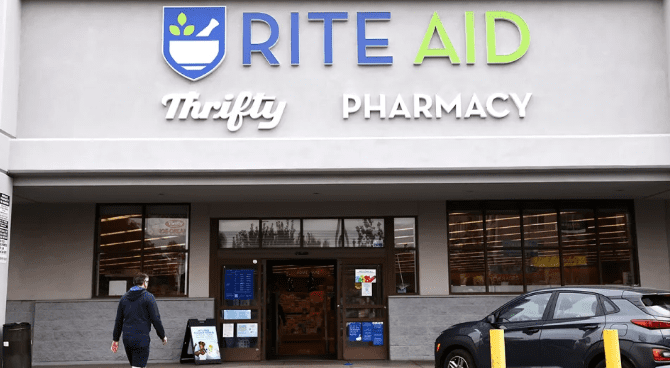Drugstores are plentiful across the United States, but the number of names up at the top has always been few in number. Now, that number is in danger of becoming one lesser.
Rite Aid, a major player in the US drugstore community, has announced its decision to file for bankruptcy protection. Founded in 1962, the financial difficulty comes after over 60 years of success. The cause? Debt and lawsuits, among other factors.
The drugstore chain is facing an overwhelming debt of $4 billion, as well as a substantial revenue decline in recent years and mounting competition in the retail pharmacy sector. The fiscal year 2023 alone saw the company grappling with losses amounting to $750 million.
The trouble has weighed heavily on the company despite its staggering 2,000 retail stores scattered across 17 states, which employ 45,000 individuals and boasted a revenue of $24 billion for fiscal 2023.
While Rite Aid continues to struggle against the clear financial woes, it has taken steps to ensure it remains operational during the bankruptcy. The company aims to provide uninterrupted service to its customers, though financial trouble is not its only concern.
The Opioid Controversy
Another significant factor that has accelerated Rite Aid’s descent into bankruptcy is the numerous opioid-related litigations against it. The US government’s accusations highlight the company’s alleged negligence in ignoring “red flags” while processing illicit opioid prescriptions.
The end result of that supposed negligence is 1,600 pending lawsuits from various stakeholders, including state and local governments, hospitals, and individuals. It is a burden making it difficult for Rite Aid, though the company is refuting any wrongdoing as the situation proceeds.
Rite Aid is not unique in its struggle against such lawsuits. The crisis has affected firms like Mallinckrodt and Endo International, which also sought bankruptcy protection due to similar litigations. The opioid epidemic has culminated in settlements surpassing $50 billion from drug manufacturers, distributors, and pharmacy chains to address the opioid crisis.
Future Restructuring and Management Changes
As a part of its restructuring strategy, Rite Aid has outlined several plans that could help right the ship:
- The sale of its pharmacy benefit company, Elixir. There is an existing $575 million offer from MedImpact Healthcare Systems, but the company is open to other proposals.
- Consideration of selling either a portion or the entirety of its retail operations.
- Closing underperforming stores to reduce overhead costs.
At the same time, the company is looking to reshape its leadership and strategize its way forward. To that end, it has ushered in Jeffrey Stein as its CEO and chief restructuring officer, taking over from interim CEO Elizabeth Burr. Stein’s appointment is the company’s bid to rejuvenate its management and operations.
The McKesson Dispute and Rite Aid’s Commitment
In addition to the bankruptcy announcement, it was also revealed that there is a brewing conflict with McKesson, Rite Aid’s primary drug distributor. Owing $700 million to McKesson based on their drug supply contract, Rite Aid preemptively sued the distributor to prevent any potential discontinuation of their drug supply agreement.
As the situation continues, Rite Aid is transferring prescriptions from closing stores to other operational ones, ensuring customers have undisturbed access to healthcare services. They also plan to reassign associates from impacted stores to other locations where possible.
Looking Forward for Rite Aid
After over 60 years, Rite Aid is facing a serious problem. It is still unclear if the upcoming chapter will be the final one or a bumpy roadblock in a continuing journey. Jeffrey Stein seems confident. In a recent statement, Stein emphasized the company’s commitment to strengthening its financial base, evolving, and continuously serving its loyal customers.
Spencer Hulse is the Editorial Director at Grit Daily. He is responsible for overseeing other editors and writers, day-to-day operations, and covering breaking news.
Credit: Source link


Comments are closed.